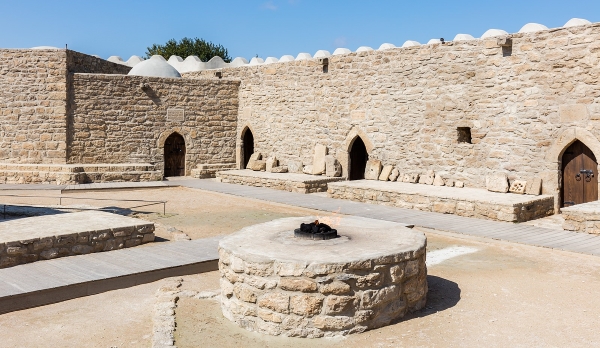Ateshgah is also known as the fire temple of Baku in Azerbaijan. It is one of the three Zoroastrian temples in the world. It is believed that the Ateshgah temple fire was never extinguished. Because natural gas has been rising out of the ground for the past century. Atesgah was built in 1713 AD. The Ateshgyakh Temple resembles a typical town caravansary, which was a type of inn with a sizable central court where caravans would spend the night.
